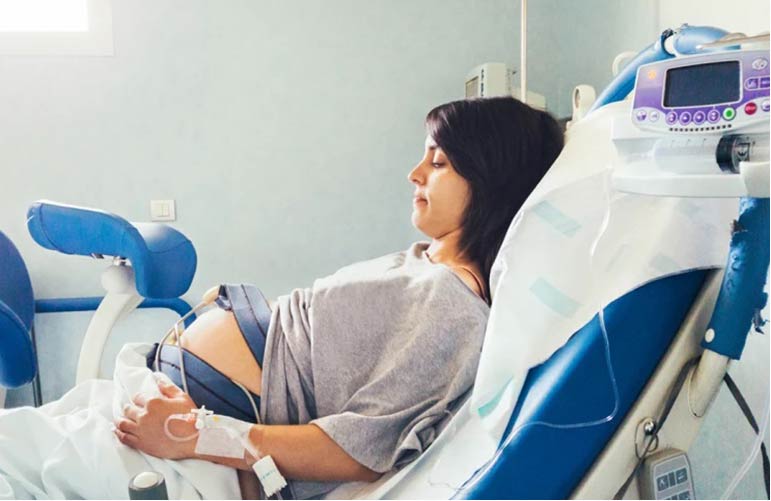
Sheetal Monitoring and NST (Non Stress Test)
To perform a non-stress test, we use a machine known as a fetal monitor. The non-stress test measures your baby's heart rate over time. The monitor has two sensors on your belly and two belts that go around your waist. One sensor detects any contractions you might be having, even if you don't feel them. The other sensor monitors your baby's heart rate, which is audible. The data is shown on a graph on paper or on a computer screen. You'll be seated in a reclining chair for the duration of the test.
During the test, one of our nurses will monitor your baby's heart rate to see how he or she is doing and to ensure that the heart rate increases when your baby moves.
A reassuring NST is one in which the fetal heart rate rises by at least 15 beats per minute above the baseline and lasts at least 15 seconds within a 20-minute period. This is known as a reactive NST. The test is said to be "nonreactive" if these accelerations do not occur. A reactive NST is a good sign, but a nonreactive NST does not indicate that something is wrong with your baby. The baby may be sleeping, or a more detailed NST or biophysical profile may be required.
A nonstress test is used to assess the health of a baby prior to birth. A non-stress test's goal is to provide useful information about your baby's oxygen supply by monitoring his or her heart rate and how it responds to movement. The test may indicate that additional monitoring, testing, or delivery is required.
When a baby is active later in pregnancy, his or her heart normally beats faster. However, conditions such as fetal hypoxia, in which the baby does not receive enough oxygen, can interfere with this response.
Your doctor may recommend a nonstress test if you have:
- Multiple pregnancies that have some complications
- An underlying medical condition during pregnancy, such as type 1 diabetes, heart disease, or high blood pressure
- A pregnancy that has lasted two weeks beyond your due date (post-term pregnancy)
- A previous pregnancy that had complications
- A baby with decreased fetal movements or potential fetal growth issues.
- Amniotic fluid deficiency
